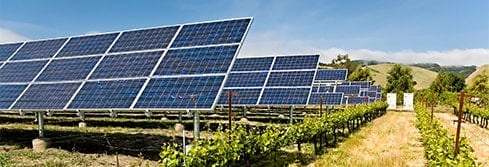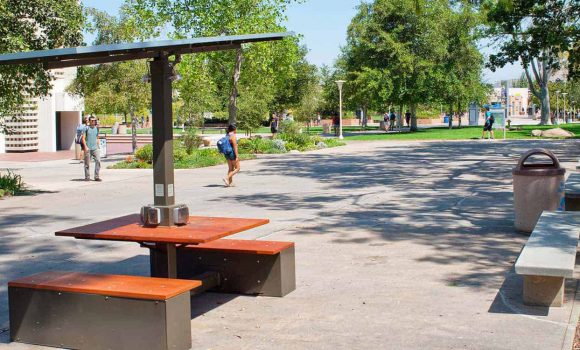As solar energy rises in popularity and its barriers to entry (particularity cost) begin to diminish, an onset of products are coming forward in the market—all promising clean, off-grid energy delivered by the sun. There are solar products for every need (a solar charging wallet has even been developed), and solar charging stations have become a mainstay at commercial properties, parks, and universities nationwide. These stations satisfy the need to mix work with relaxation, while also providing security for its users with the knowledge that their devices can be charged seemingly anywhere.
With such a plethora of options in solar charging stations available, we are often questioned about what makes the Sunbolt. We find that a lot of potential customers are unaware of the benefits and limitations of certain stations, and so we created this blog to help clarify what you need to know when considering buying a solar charging station.
Power Capabilities
While designs with dainty or small solar panels may be aesthetically pleasing; they may not have the ability to charge many devices. Ask about the size of the solar array, and how many Watts it generates. It is also a good idea to ask how many devices can be charged per day on average. For some spaces, it may not be necessary to have the capability of charging 50+ devices per day, but for others, it may be essential.
Charging Capabilities
What kind devices are you looking to charge? Just cell phones, or will you need 120v outlets for laptops, projectors, and other devices? It is important to think about how the station will be used. If it’s in a common area like a quad or a corporate campus, you will probably need 120v so students and employees can plug in their laptops to work.
Autonomy
Autonomy is essentially how long the solar energy will be stored after the sun stops shining. This is important especially if you are in an area that has a lot of rainy/overcast days, or if you expect patrons to have the need to use the station at night.
Materials
It is very important to understand the base materials of a solar charging station and their purposes. Some stations are meant to be easily collapsible/transportable to other areas. Others, however, are made to withstand harsh weather conditions. If you live in an area that is susceptible to hurricanes, tornadoes or heavy rainfall, you will want to invest in a station made from durable materials that are wind tested to endure the elements.
Design
How well will the solar station’s design complement your surrounding environment? The design may be functional, but will professionals feel comfortable working at one at a corporate campus, will students enjoy it in a university setting? How well will the station blend with the natural landscape of a local park?
Maintenance
Pay close attention to how often the station will have to be cleaned/have batteries changed, etc. Some stations require routine maintenance, while others will barely need any.
Service Life
A solar charging station shouldn’t be a short-term investment. Look for warranties, and figures on the expected service life for the station and its component parts.
There are many different solar charging stations on the market and each of them focuses on different customer needs. We hope that this blog helps you understand what exactly you are looking for in your charging station and ultimately leads to you selecting the product that best fulfills your property’s needs.


